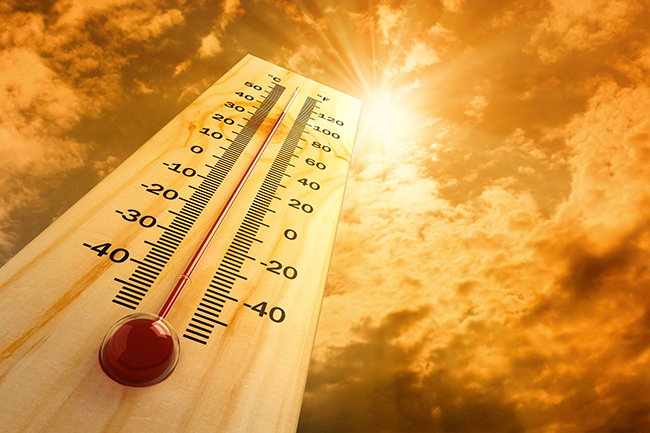Arizonans are plenty familiar with the extreme heat that plagues the desert, but with increasing concern over the climate crisis, low-income members of urban heat island communities are in greater need of help.
For members of low-income communities, the heat impact can be more difficult to manage. Manny Elizalde, a student at Arizona State University, lives in an urban area that is mostly sidewalks and streets with minimal areas to find shade or water.
“I think what makes it difficult during the extreme heat is that there are hardly any places to fill up a water bottle or places to stop and rest if you are walking very far distances,” said Elizalde who is from a lower-income area in Phoenix.
READ ALSO: Phoenix trails will be restricted during days of extreme heat
Kristi Eustice, a senior research analyst, contributed to Arizona State University Morrison Institute’s “Are State and Local Policies Addressing Community Concerns about Extreme Heat? A Case Study of American Indian and Latino Communities in Phoenix, Arizona.” The study was released in August and examined how low-income and minority communities are disproportionately affected by the heat.
“Many community members we spoke to reported experiencing the most heat during transit or at home,” Eustice said. “In particular, community members discussed the challenge of maintaining thermal comfort at home while also managing their energy usage to stay within their household budget.”
Many of the people that live in these communities rely on public transportation for work, grocery shopping and daily errands. However, heat island communities typically have fewer resources or finances available to shield them from Arizona’s intense heat during their commute.
Elizalde noted that he usually stays home during the summer with the AC on and a separate fan running. Many members of low-income households may have access to air conditioning, but the cost is oftentimes a huge factor that families cannot afford.
“While effective heat management strategies exist (e.g., indoor air conditioning, increased vegetation and trees; Environmental Protection Agency [EPA], 2021), they are not equally available across racial groups, income levels, and neighborhoods due to a variety of historical and contemporary factors,” the ASU study said.
Ultimately, the study served to gain information on where gaps between already existing heat policies exist and what members of these communities find to be helpful. The study found that community members had discussed a need for more public outdoor shaded spaces or water features.
Elizalde has a similar perspective and feels that “having more greenery and water stations would help people handle the heat a little better since they would be able to take a break from the heat under some shade or by getting some water,” he said.
Although the temperatures are finally dropping, the issue is ongoing and needs to be addressed year-round in preparation for a battle that is sure to resurface.
“Before too long, temperatures will be rising again,” Eustice said. “It is important to continue the conversation about heat mitigation as temperatures cool so that as a city we can be proactive in planning for future, hotter summers and to meet the needs of the most at-risk community members.”
Eustice suggested one way to elevate these underrepresented voices is to get involved in plans that individuals or cities take on.




